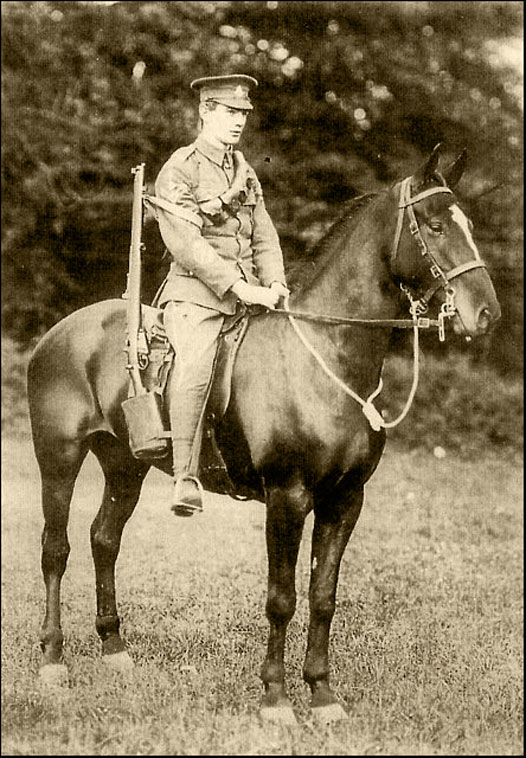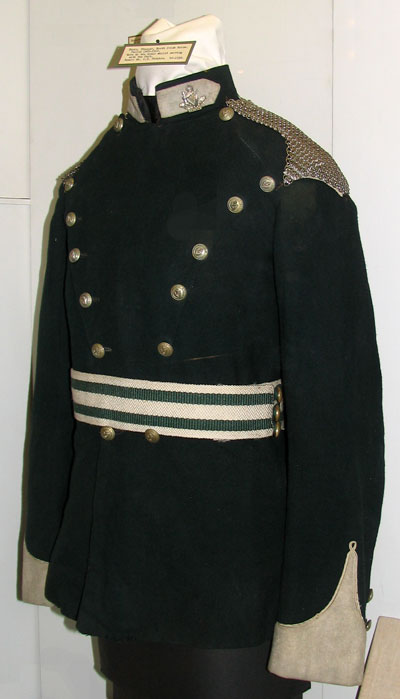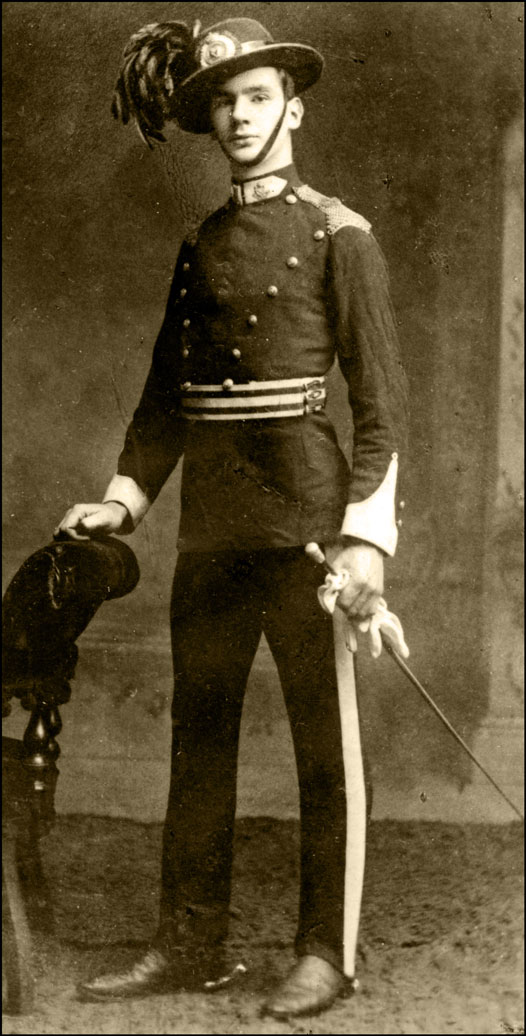Lieutenant Charles Delmege Trimble
Charles Delmege Trimble was born on 27 March 1887 at Mall, Ballyshannon, County Donegal, son of newspaper proprietor (The Armagh Guardian) Samuel Delmege Douglas Trimble and his wife Margaret (nee Hersee). His mother died when he was aged just 13. His uncle, William Copeland Trimble, was proprietor of the Enniskillen newspaper The Impartial Reporter, and the driving force behind the UVF mounted unit the Enniskillen Horse, and the 6th (Inniskilling) Dragoons Service Squadron.
On 26 November 1906 Trimble enlisted in the North of Ireland Imperial Yeomanry. On 6 July 1908 the North Irish Horse was formed following the yeomanry regiment's disbandment. Trimble transferred to the new regiment on that day, joining D Squadron (Dundalk) and was issued regimental number 97.
On 30 November 1908 he was promoted to corporal, on 8 April 1913 sergeant, and on 27 July 1914 squadron sergeant-major. On 29 January 1915 he was made warrant officer class 2.
Trimble embarked for France on 2 November 1914 but returned to the UK on 17 December. He then joined D Squadron which moved to Bedford in England and awaited orders for France. However in April 1915 he was involved in a serious motor vehicle accident near the village of Willington, sustaining a compound fracture of his right knee. He spent the next 4½ months in the County Hospital, Bedford, before returning to the North Irish Horse reserve at Antrim.
It was not until May 1916 that he was fit for overseas service, and then only for "clerking work". Arriving in France on 14 May, Trimble was employed at the Cavalry Section, 3rd Echelon GHQ, and in his words "did a considerable amount of Office Work, gaining a good knowledge of Army Office Routine and methods of bookkeeping."
In early 1917 he applied for a commission. He left France for officer training on 13 March, reporting for duty at the Royal Artillery Cadet School at St John's Wood a month later. At the same time Trimble was awarded a Special Reserve Long Service and Good Conduct Medal.
On 9 September 1917 Trimble was commissioned as a 2nd lieutenant and posted to the Royal Field Artillery Special Reserve. He was promoted to lieutenant on 9 March 1919. At around this time Trimble was attached to the Royal Army Ordnance Corps, working at No.15 Ordnance Depot, Dieppe.
Later that year he returned to Ireland and on 31 October married commercial teacher Mary Annie Sophia Quigg at Coleraine, County Londonderry.
Trimble was demobilised on 31 January 1920 and relinquished his commission on 1 April that year. Soon after he applied for a permanent commission in the Royal Army Ordnance Corps, but was not selected.
Trimble became a partner in the family newspaper and printing business in Armagh, and editor of the Armagh Guardian. He was an accredited war correspondent in General Gort's headquarters in World War 2, as well as being active in civil defence activities. He was also active in the British Legion. He died on 17 May 1977.
Trimble's recollections of the war, recorded late in his life, were published to mark the centenary of the North Irish Horse in 2002 under the title Memories of The North Irish Horse. His dress uniform is on display in the Armagh County Museum.
Trimble's younger brother also saw service in the war as a corporal in the Royal Engineers, and was wounded while working as a despatch rider. Three of his cousins, sons of William Copeland Trimble, also served. Captain Ailywn Egerton Copeland Trimble served in the 7th Battalion, Royal Inniskilling Fusiliers and the 2/1st Northern Cyclist Battalion and was twice wounded; Lieutenant Reginald Stuart Trimble served in the Royal Irish Fusiliers and Royal Engineers; and 2nd Lieutenant Noel Desmond Trimble, who died at Hulluch on 29 April 1916 while serving with the 8th Battalion, Royal Inniskilling Fusiliers.
Three more images of Trimble can be seen here, here and here.


Trimble's dress uniform (Armagh County Museum)
First two images sourced from Memories of the North Irish Horse.

